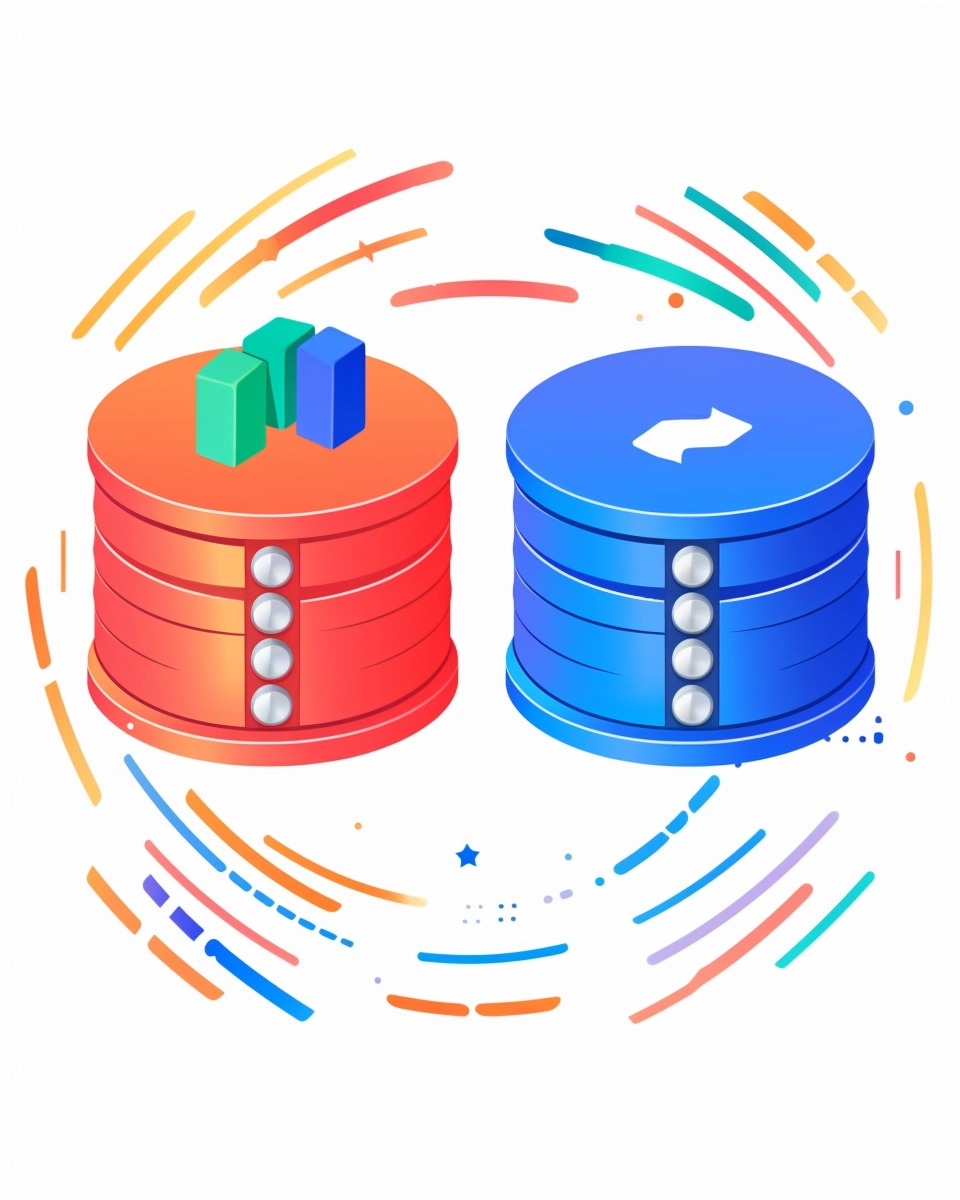I'm a Senior MLOps Engineer with 5+ years of experience in building end-to-end Machine Learning products. From my industry experience, I write long-form articles on MLOps to help you build real-world AI systems.

Greetings 👋 and welcome to our exploration of data services 🔍 !
In today’s digital era, the right data service is not just a tool 🔧 but a strategic asset. In this article, we will delve into the specifics of Google Cloud SQL and BigQuery, two powerful prodcuts that can transform your data management strategy.
Sit back, relax, and enjoy these images of futuristic data centers, brought to life by the power of AI. These visuals are not actual representations of these technologies, but rather, they’re imaginative renditions of what the future of data management could look like. Enjoy the journey !
By the way, if you’d like to have a deeper understanding of the Data Engineering field, feel free to read this article.
Google Cloud SQL

Let’s explore Cloud SQL first ! As a fully-managed relational database, Cloud SQL supports MySQL, PostgreSQL, and SQL Server, making it a versatile tool for managing and storing data for web, mobile, and business applications.
Cloud SQL operates on a pay-as-you-go model, which means you only pay for the resources you actually use 💰 This includes the cost of the database instance (which depends on the type of hardware you choose), storage (both for your database and for backups), and network traffic. It’s important to note that even if your instance is idle 😴 you’re still charged for the instance and storage, since your data is still stored and your instance is still ready to handle requests.
Google BigQuery

BigQuery is a serverless, highly-scalable, and cost-effective multi-cloud data warehouse 🏢 designed for business agility. It’s built to crunch big data, making it ideal for running super-fast 🏃🏻♂️ SQL-like queries on large datasets.
BigQuery’s pricing model is designed to be straightforward and flexible. You pay for what you use, with costs for storage and querying 📊 Storage costs are based on the amount of data you store, while query costs depend on the amount of data processed by your queries. If you’re a high-volume user, BigQuery offers flat-rate pricing, which provides unlimited querying for a fixed cost per month or year.
Fundamental Differencies
Let’s delve into the key differences between Cloud SQL and BigQuery. As you might have understood by now, at their core, they are both very different. Cloud SQL is a fully-managed relational database service, while BigQuery is a serverless, highly-scalable data warehouse.
Where does Cloud SQL really shine ? 🌟 Relational databases in general are a perfect fit as backend applications to store data that is frequently changed and done so with low latency. It has to do so concurrently with many simultaneous connections.  On the other hand, Google BigQuery is a powerhouse when it comes to handling massive amounts of data 🌐 Its low storage pricing makes it an attractive option for querying large datasets or as a data warehouse for storing large amount of data that doesn’t need to run on a high concurrency regime.
On the other hand, Google BigQuery is a powerhouse when it comes to handling massive amounts of data 🌐 Its low storage pricing makes it an attractive option for querying large datasets or as a data warehouse for storing large amount of data that doesn’t need to run on a high concurrency regime.
However, due to its high latency, it wouldn’t be the best fit as a backend database for an application. Instead, BigQuery excels in scenarios where you need to analyze large amounts of flattened data.
For instance, imagine you’re a data analyst at a large corporation, and you need to analyze sales data from the past decade 🔬 With BigQuery, you can quickly run complex SQL queries on this large dataset to gain valuable insights 💡
Practical Examples
Let’s dive into some practical examples of how Cloud SQL and BigQuery can be used.
Suppose you’re running an e-commerce platform. Cloud SQL could be used to manage the transactional data, such as customer orders and product inventory. It’s excellent for maintaining the relationships between these entities and ensuring data consistency.
On the other hand, BigQuery could be used to analyze customer behavior and sales trends. For instance, you could run a query to find out which products are the most popular in a certain region or during a specific time period. This kind of analysis can provide valuable insights to drive your business strategy.
Caution with BigQuery

It’s important to exercise caution when running analytics on big data using Google BigQuery, as it can potentially incur significant costs if queries are not optimized or efficiently structured.
Given the scalability and power of BigQuery, running un-optimized queries on large-scale datasets can lead to unexpected billing.
It’s crucial for users to have a clear understanding of their query design, data structure, and optimization techniques to ensure cost-effective usage. Proper planning and knowledge of query optimization strategies can help maximize the benefits of BigQuery while minimizing unnecessary expenses.
Conclusion
To wrap up, both Google Cloud SQL and BigQuery have their strengths and are suited to different use cases. 🎁 If your application requires complex transactions and relationships between tables, Cloud SQL is your go-to service. However, for storing large amounts of data and large-scale analytics, BigQuery stands out.
BigQuery and Cloud SQL have different pricing structures when it comes to infrastructure uptime. If your data is not accessed often but needs to be readily available, Cloud SQL will still charge you for the CPU core by the hour, even if it’s idle. However, BigQuery does not have such charges.
Want to learn about an industrial application of these concepts ? Jump right to my next article.
